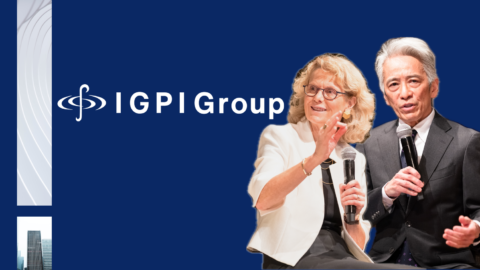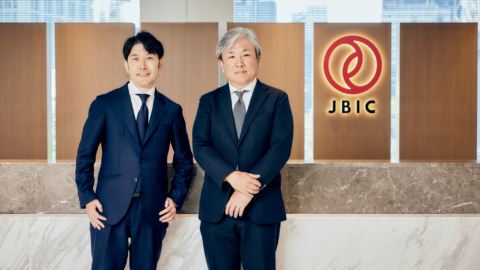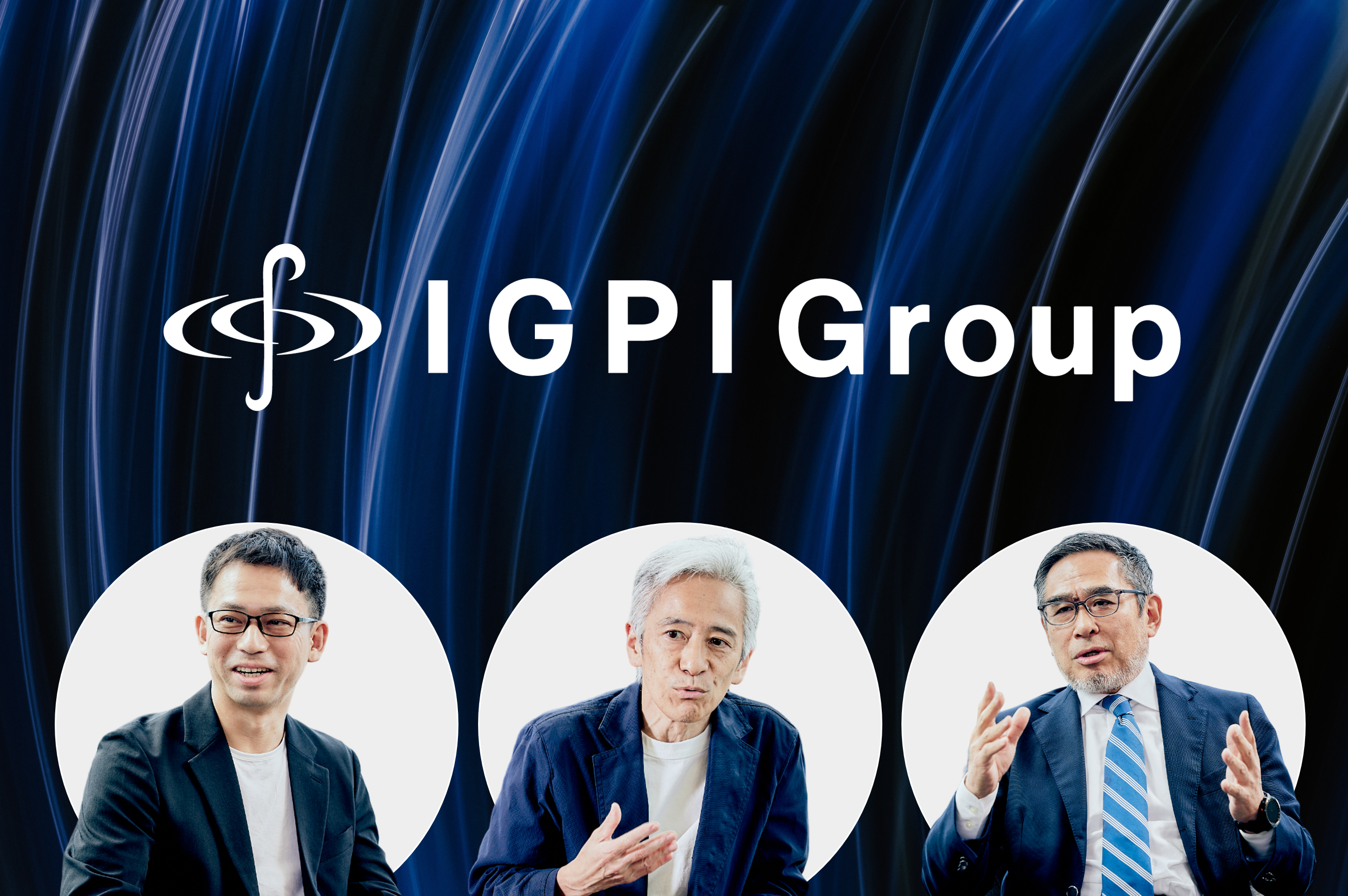
Revitalizing Japan’s Semiconductor Industry: Orchestrating Outcomes from a Shogi Player’s Perspective
As digitalization advances, the importance of semiconductors in corporate management is increasing, regardless of the industry. We welcomed Masaki Yoshizawa, an IGPI alumnus active at Tokyo Electron (TEL), a leading Japanese semiconductor equipment manufacturer, to discuss the state of the semiconductor industry, global competition, and professionalism with Naonori Kimura and Toshinari Furusawa of the IGPI Group.
Is the Eye of the Storm Quantum Computing?
Toshinari Furusawa: Every time a “shock” like COVID-19, Trump tariffs, or DeepSeek occurs, semiconductors invariably become a hot topic. How do you view these industry trends?
Masaki Yoshizawa: There are three recent major trends related to the increase in semiconductor demand. Around 2019, geopolitical risks intensified, leading to a surge in semiconductor demand from Chinese customers. If we call this the first wave, the second wave was the stay-at-home demand during the COVID-19 pandemic. The use of computers, smartphones, and game consoles increased, and the semiconductors installed in them, as well as semiconductor manufacturing equipment, sold well.
The third wave is the AI gold rush. Since the emergence of the “Transformer” deep learning model in 2017, demand for GPUs has significantly increased. Previously, there was the problem of “overfitting,” where models were too closely fitted to the training data, reducing predictive accuracy. However, the “scaling law,” where models become smarter in proportion to the amount of training, and the “emergence” phenomenon, where models suddenly exhibit unexpected intelligence through repeated learning was discovered. Viewed this way, I see these “shocks” as merely waves within a larger tide that began after 2017.
Toshinari Furusawa: When I speak with different companies, I feel that the importance of semiconductors in management is also increasing in other industries. During the COVID-19 pandemic, when semiconductors were in short supply, a company’s fate was determined by how many semiconductors it could secure and how it allocated the limited supply to its various businesses. There were cases where companies allocated many semiconductors to low-profit businesses because they had large customers, only to lose market share in high-profit businesses to competitors, resulting in a decline in overall company performance. I believe that the combination of semiconductors, supply chains, and management has significantly changed earnings power, or ROE.
Masaki Yoshizawa: A similar situation is occurring with high-end GPUs for AI. Semiconductor production cannot keep up, and the number of GPUs a company can secure has become almost directly linked to its competitiveness in the AI industry.
Naonori Kimura: As you say, wins and losses are currently determined by the scramble for GPUs, but I feel it’s about time for the tide to change.
Masaki Yoshizawa: I’m particularly interested in understanding where AI and quantum computing will intersect. GPUs have issues such as power consumption and securing computational capacity, so I believe that in about five years, we’ll be in a world where AI processing is done by quantum computers. AI was never intended to always produce “100% correct answers”; it’s a mechanism that probabilistically derives optimal solutions from vast amounts of data, designed to tolerate ambiguity and uncertainty in its output. I think this characteristic is highly compatible with quantum computers, which are inherently probabilistic in their calculations. In the interim, we can expect to see the continued development of specialized chips as substitutes for general-purpose GPUs.
Recently, SoftBank Group acquired Ampere Computing, a semiconductor design company, for about 1 trillion yen. This is a valuation that would normally be unthinkable for a company with recent sales of about 2.4 billion yen. However, when a new industry is born, the initial momentum cannot be achieved without vertical integration. In other words, in the beginning, one company has to take on everything itself to create a new industry all at once, and gradually, companies specializing in each process emerge, eventually shifting to a horizontal division of labor. I imagine Mr. Masayoshi Son saw the rise of a major field in AI-specific chips and decided to become the first player himself.
Toshinari Furusawa: The arrival of DeepSeek demonstrated that anyone can create AI models more cheaply, lightly, and openly, without making large-scale investments in massive cloud servers like large corporations do. I think technologies that actuate the physical domain, like edge AI chips and sensor elements, will also accelerate in the future.
Masaki Yoshizawa: If GPUs represent the most advanced solution on the cloud side, then we are seeing the same advancement on the edge computing side. While running LLMs (Large Language Models) in the background, their outputs are combined to provide customized reasoning and inference at the edge. In that context, the developing trend isn’t about large companies using closed algorithms; instead, it’s increasingly about how to run AI as lightly and efficiently as possible using open-source solutions. It’s interesting that a Chinese company, often seen as closed, has challenged OpenAI, which, despite its name, is not so open.
Toshinari Furusawa: China is steadily gaining strength. Especially in cutting-edge fields like AI and semiconductors, the speed of R&D is fast, and I feel they are building their own ecosystem. The kind of tectonic shifts once seen in manufacturing industries like automobiles may also be underway in the semiconductor industry.
Masaki Yoshizawa: The center of gravity for industries like steel, shipbuilding, automobiles, and solar cells has shifted to China. As history rhymes, I believe a similar transformation will happen in the semiconductor industry. As we imagine a future of “quantum leaps” (discontinuous progress) through hypothetical and science-fiction thinking, it becomes imperative to determine what actions we must take in the present. To thrive in an industry where significant changes are happening at a rapid pace, I think it’s crucial to manage with a mindset of initiating change ourselves, rather than simply adapting to the changes.

Naonori Kimura: TEL is one of the few Japanese companies engaged in full global competition. Compared to global competitors, there seems to be room for growth in terms of scale and profitability. What kind of corporate transformation are you considering for the future?
Masaki Yoshizawa: In terms of market capitalization for semiconductor equipment manufacturers in March 2025, ASML of the Netherlands is at the top, followed by Applied Materials (AMAT), Lam Research, and KLA from the US, with TEL in fifth place. If we analyze the factors, we can see that TEL loses to ASML and KLA in PER (Price-to-Earnings Ratio) and to AMAT and Lam Research in net profit. ASML is almost a single segment with lithography systems, and KLA with metrology systems; they dominate their respective fields as the entire industry grows. It’s easier for them to paint a picture of growth, which likely leads to higher PERs. Net profit is simply the difference in sales multiplied by profit margin. Therefore, our potential for growth lies in enhancing our growth strategy and earning power.
Toshinari Furusawa: Decomposing PBR gives you ROE × PER. If you consider ROE as earning power, the strategy would be to catch up with competitors in existing businesses while increasing market expectations and PER through the exploration of new areas. I believe “ambidextrous management” is also required for corporate transformation, but are you currently focusing more on earning power as an immediate management challenge?
Masaki Yoshizawa: Against the backdrop of overall industry growth, we are first aiming for an operating margin of more than 35% by firmly growing our strong businesses in expanding fields. Under President Tony Kawai’s leadership, we are working to achieve this within two years.
Naonori Kimura: There are two ways to compete globally: to compete globally as a Japanese company, or to become a global company originating from Japan. Which direction is more desirable for your company?
Masaki Yoshizawa: If we aim to be number one, the latter is more suitable in terms of talent acquisition and on-site R&D with customers. On the other hand, we traditionally have our factories in Japan, and all our executives are Japanese. While we aim to be a “Truly Excellent Global Company,” the current reality is the former, and that might require corporate transformation.

An Industry That Requires Profit Consciousness, Grit, and Investment Acumen
Naonori Kimura: Your company started as a trading company, and I believe it has a very strong drive when it comes to achieving results. In addition to that strength, what else is necessary to become the top global player?
Masaki Yoshizawa: Ultimately, it’s about technological acumen. The technological evolution of semiconductors is, of course, paramount, but semiconductors are ultimately tools for computing, so if something with higher performance emerges, it will be replaced. In that sense, quantum computers are both a threat and an opportunity. If you only look at semiconductors, you fall into the innovator’s dilemma. It’s about understanding how the world and technology are evolving, and who to partner with to keep up with the trends. We need to further develop our perceptiveness and sound judgment.
Toshinari Furusawa: Previously, someone from a semiconductor equipment manufacturer casually mentioned, “It took 20 years to get this equipment up and running.” Developing several new initiatives – nurturing ‘seeds’ for the future – over such a long period requires the kind of perseverance that can only be sustained if the company keeps generating cash from its current business lines. I was struck by how this industry, even with a simple product lineup, calls for such “ambidextrous management.”
Masaki Yoshizawa: That’s also an important point. “Profit” comes first in TEL’s management philosophy. Without profit, you can’t invest, educate, or be sustainable. In particular, you need the financial strength and management foundation to endure a situation where the J-curve continues to dip for 20 years. It might be a difficult industry if you do not possess these three factors: the ambition for profit, the grit to keep believing, and the acumen to invest in the right places.
Naonori Kimura: Conversely, it wouldn’t be surprising to become complacent with the current operating margin of nearly 30%. Where does the driving force to strive for even greater heights come from?
Masaki Yoshizawa: Internally, we are now using the keyword “NT1” (New TEL as No.1). While the goal to surpass ASML and increase our market capitalization three or fourfold is certainly ambitious, the generation that remembers TEL as No. 1 is eager to show that kind of success to their younger colleagues.

Connecting with the Right People at the Right Time
Naonori Kimura: Yoshizawa, you are an IGPI alumnus. Do you have any memories that stand out from your time there?
Masaki Yoshizawa: I built my career as a researcher and joined the company without knowing much about management or investment, so Mr. Takashi Muraoka often told me, “Your stories are interesting, but they don’t smell of money.” This was because I lacked the perspective of return multiples, such as asking myself, “With this investment, how much return could we expect over what timeframe?”
Naonori Kimura: That’s a very important perspective for a manager. Was it useful later on?
Masaki Yoshizawa: In February 2019, Dr. Makoto Gonokami, then President of the University of Tokyo, wanted to revive Japan’s semiconductor industry and came to meet Mr. Terry Higashi, former President and CEO of Tokyo Electron. They discussed the 3DIC R&D Center in Tsukuba that was being considered with the TSMC Chairman, Dr. Mark Liu. Hearing this, I told them, “The scale of investment doesn’t match the goal of reviving the industry. Reviving the industry requires investment on the scale of trillions of yen, and we should be talking about something as big as attracting a TSMC Fab (semiconductor manufacturing facility).” Dr. Gonokami, Mr. Higashi, and Mr. Nobuyuki Idei, former CEO of Sony, with whom I was close, agreed and lobbied relevant parties, which I believe created the major momentum leading to the current JASM. Contributing significantly to this was Mr. Keita Nishiyama, now a Senior Executive Fellow at IGPI Group, who was at the Ministry of Economy, Trade and Industry (METI) at the time. He and his colleagues at METI had a remarkably astute understanding of how Japan needed to position its semiconductor industry as economic security became increasingly vital. It truly felt like we had achieved “the right time, the right place, and the right people.”
Toshinari Furusawa: So you paved the way for JASM’s formation and helped steer key individuals behind the scenes.
Masaki Yoshizawa: Mr. Toyama often said, “Be aware of yourself both as a piece on the shogi board and as the shogi player.” In the previous example, if Mr. Idei, Mr. Higashi, and Dr. Gonokami are rooks or bishops, I only have the power of a silver or knight. On the other hand, as a shogi player, I can strategize how the silver should move in a given situation to maximize the power of the rook and bishop. Learning how to conduct myself from Mr. Toyama and personally witnessing the power of embedding good ideas with the right people at the right time to make things happen was very valuable.
Naonori Kimura: That’s a formidable “dark side skill”. How did you acquire it?
Masaki Yoshizawa: Around 2008, I felt frustrated that the complexity of the semiconductor supply chain and the signs of emerging new applications were not understood in Japan, and it was considered a sunset industry. Then, my worldview expanded significantly after directly witnessing Mr. Idei discuss grand ideas with people from all over the world, and spending time surrounded by my seniors at IGPI, who were making a difference in the world. I came to believe that I, too, could change the world and contribute to the revival of the semiconductor industry.
Naonori Kimura: That truly embodies the spirit of an IGPI professional. At IGPI, our core philosophy, which your journey clearly demonstrates, isn’t centered on the pursuit of money or recognition for one’s own sake. Instead, it’s about deeply considering what serves the greater good of society and accomplishing it with an altruistic spirit. What qualities do you think are necessary to bring about such change?
Masaki Yoshizawa: I believe it’s about escaping the trap of path dependency, or in other words, being “free.” Companies are fundamentally formed to save on transaction costs, and they are inherently ill-equipped for the unknown, where such costs are high. However, to adapt, survive, and win in a rapidly changing business environment, management must challenge the unknown. This calls for corporate transformation. Ambidextrous management is also one approach to escape path dependency. In addition, I believe a more fundamental theme is organizational liberal arts.
Naonori Kimura: What do you mean by organizational liberal arts?
Masaki Yoshizawa: According to Professor Takahiro Ueyama of the National Graduate Institute for Policy Studies, liberal arts are the “arts to liberate yourself.” My interpretation is that organizational liberal arts are the techniques (arts) to liberate a company from the constraints of past baggage, mental paralysis, and other forms of path dependency. It gives people the courage to take on new challenges with free thinking. This resonates with IGPI’s Eight Questions, such as “Are your mind and heart set free?” and “Are you denying or running away from the reality you are facing?”
Naonori Kimura: Finally, what do you hope to see from IGPI in the future?
Masaki Yoshizawa: What is indispensable in practice now is finance thinking. This involves the ability to adapt to changes in the business environment and reallocate company resources – not just money, but also human capital – at the right time. The concept of a discount rate, which translates future growth into present value, is also crucial. Positively, this means an investor’s mindset, aiming for future returns through upfront investment. Negatively, it means possessing the critical foresight to understand that if decisions aren’t made promptly, the situation will eventually become dire. I think IGPI, which handles both new business investment and business revitalization, has a large role to play here.
I also hope that IGPI will actively champion the transformation of companies and industries, supporting and at times spearheading these changes as they navigate an increasingly volatile business environment.
Naonori Kimura: We’ve encouraged companies to transform, and, just as importantly, we have also strived to evolve our own business model and acquire new capabilities. Looking ahead, we remain committed to our continuous corporate transformation. Thank you for your time today.



